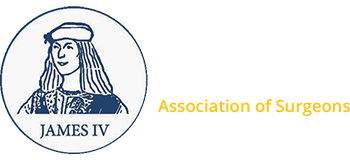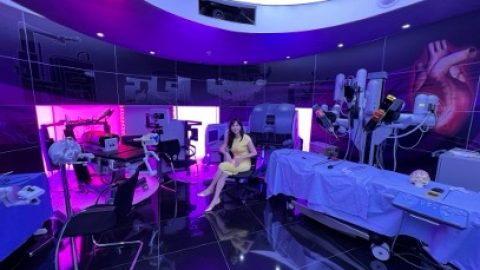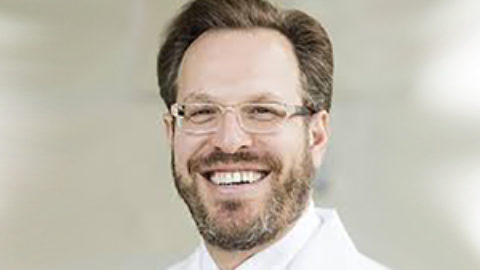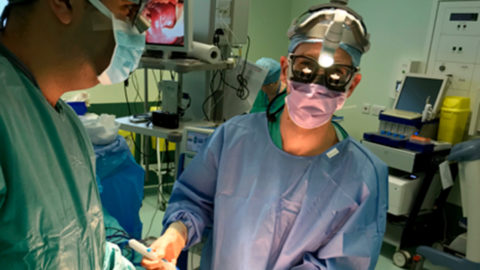Part I: July 5-21, 2019
Tokyo, Japan
With 126 million inhabitants Japan; the city of Tokyo has a population of about 10 million. The Japanese population is slowly decreasing but the incidence of gastric cancer is still high. The most important underlying risk factor is H. Pylori infection but infection rates are trending down. Screening for gastric cancer is done but not in an organised fashion and this is not formally coordinated by the government as we know for example from breast or colorectal cancer. Many Japanese people, however, do get an endoscopy when they are around 40 years old. There are many private and public endoscopy centres with easy access. Hence, early gastric (and oesophageal) cancer is relatively often detected. The treatment of these cancers is according to the Japanese guidelines.
During my first week of the fellowship, I visited the Cancer Institute Hospital in Tokyo. The Cancer Institute foundation was founded in 1927 and the present hospital in East Tokyo was build approximately 15 yrs ago. It is a modern centre with 700 beds. Medical director Professor Sano was my host together with Dr. Kumagai. I very much enjoyed the team discussions where also difficult cases were discussed and expertise sought from all specialists. All patients that will be operated the following week and patients that already had their operation were discussed. In the latter group, pathological specimens and intraoperative pictures were discussed for quality control. Surgeons are trained to become more or less “organ specialists”. Gastric cancer is taken care of by gastric cancer surgeons and oesophageal cancer is treated by another team. There were 16 registrars, actively involved in the care for patients. The Cancer Institute performs about
400-500 gastrectomies per year. Minimally invasive techniques for early stages, locally advanced cancers are operated with an open technique. State of the art 3D laparoscopy and robotic surgery is available and being used. I had the privilege to attend many operations and noticed the standardized techniques, precise lymph node dissections and handling of the specimens.
I also visited the department of Gastrointestinal and general surgery of Keio University Hospital in Tokyo. Prof Kitagawa was my host. I observed a minimally invasive oesophagectomy. I noticed the differences in surgical approach with Europe. In Japan mainly squamous cell carcinomas are treated as opposed to adenocarcinoma in the West. The dissection is more in the upper mediastinum and neck (3rd field) in Japan to achieve a complete nodal clearance. I also watched some laparoscopic gastrectomies with D2 nodal dissection. Hence, I gained a deep insight into the intra-thoracic and upper abdominal lymph node stations, its anatomical boundaries and the dissection techniques. It was very nice to see how skilled the Japanese surgeons and I learned some tips and tricks that I can use in my operations back in the Netherlands. Besides observing surgeries, I was also involved in clinical conferences and discussions on research projects. surgery.
In both hospitals, I gave a presentation on the national surgical training program of the Netherlands and on surgical research. It was a great opportunity to share my views on this to trainees and surgeons in both centres. Both teams kept me busy but I had some time in the weekend to explore the city of Tokyo: wonderful parks, beautiful modern buildings modern and lots of heritage. The museums were splendid and of course the food like nowhere else. At the end of my week, I felt that one week was a bit short but I managed to get a deeper understanding of the Japanese approach on the diagnosis and treatment of oesophagogastric cancer. Furthermore, I made friends and plans for collaboration on future research projects. After my visit, I now have a better understanding of the scientific papers and reports from Asia: their preferred surgical approaches and perioperative management that are among the best in the world.
Brisbane, Australia
My second week was at the Princess Alexandra (PA) Hospital in Brisbane, Australia. The Brisbane population is almost 2 million. Previous James IV travelling fellow, Professor Andrew Barbour, was my host. During my stay I had the privilege to also meet with the other members of the Upper GI team: David Gotley, Mark Smithers and Iain Thomson. Besides their expertise in benign and malignant disease of the upper GI tract, melanoma and sarcomas are other interests of the group. It was surprising to hear that almost 1 in 15 Australians are diagnosed with a melanoma and in people over 70 years this is 1 in 8. During my stay, I attended the multidisciplinary team discussions and a research meeting. It was nice to see the infrastructure of the hospital and a beautiful research centre next to it. This stimulates translational research. Just a few months after my visit a Dutch medical student will start a collaborative project at the PA with Andrew Barbour. I also had the privilege to observe a few operations, i.e. an oesophagectomy and a few gastrectomies. The difference in patient’s BMI between Japan and Australia was striking. Apart from a different patient population, it was interesting to experience the two paradigms on the treatment of oesophagogastric cancer. Whereas in Australia and Europe/US neoadjuvant chemotherapy or chemoradiation followed by surgery is the standard approach, in Japan surgery is the first-line treatment by many and adjuvant treatment (chemotherapy) is often given in advanced cancers.
Apart from visiting the PA, I also followed Dr. Barbour in a Private hospital he works at. Laparoscopic fundoplications are being performed at a high number and at the highest level of expertise. The group has a database that includes more than a thousand patients after a fundoplication.
Brisbane is a lovely city and my hosts organised nice dinners and social events. The hospitality was great! At the end of my two weeks of travelling, I met with my three children in Adelaide, South Australia to have a three-week holiday together. In Adelaide, I met with friends when I was a senior registrar at Flinders University during the years 2006-2008.
Part II: November 9-23, 2019
Seattle, USA
I visited the Virginia Mason Medical Center in Seattle in November 2019. Dr. Don Low and his team (Dr Kuppusamy and Dr Hubka and the research fellow Dr Puccetti), a thoracic surgeon, was my host. An important aim of my visit was to see their clinical pathway for patients with oesophageal cancer. Dr Low and his team have published many papers on this and have inspired many centres around the world with his enhanced recovery after surgery. I had a chance to speak to many caregivers and stakeholders including intensivists, anesthesiologists, nurses and dieticians and see how the culture in the hospital of getting patients mobilised and discharged early without adverse events. I had the privilege to observe some beautiful operations. I managed to see some interesting approaches, tips and tricks that I will take back home. One of them is the use of a paravertebral analgesia that can easily be placed by the surgeon during thoracotomy/thoracoscopy. The advantage is that under vision the catheter is placed in the right place by the surgeon. This eliminates the use of an epidural that takes time and may have more systemic effects.
Dr. Low is also the initiator of the Esophageal Complications Consensus Group (ECCG). The ECCG started as a group of enthusiastic high-volume centres on oesophagectomy from all around the world. The ECCG managed to reach consensus on a core outcome set of complications and their definitions. At present over 10.000 patients have been registered in an international web-based database. My visit to Seattle gave me the great opportunity to also discuss new developments and adaptions of the database and share my views with the group. By the way, Seattle has some places where they brew very nice beers and Dr Low and his team took me out to discuss science over a pint of Northwestern IPAs.
New York, USA
Next and last on my schedule was Memorial Sloan Kettering Cancer Center (MSKCC). Dr. Vivian Strong was my host. She is a gastric cancer specialist surgeon of the Gastric and Mixed Tumors section of the department of surgery. She is supported by a great team of specialists and a wonderful infrastructure at MSKCC. The main goal of this visit was to see and experience how one of the largest cancer centres in the world manage cancer patients and to attend the multidisciplinary discussions and surgical meetings (teaching, morbidity/mortality and research). I had the privilege to meet some of the world prominent surgeons. Observing a robotic gastrectomy was very helpful in order to help to expand my own experience with robotic surgery that is limited to thoracoscopic robotic oesophagectomy. In between cases and patients at the clinic, there was time to exchange ideas and views related to the diagnosis and treatment of gastric cancer. It was a great honour to speak on Wednesday morning at the fellows teaching session on laparoscopic and open gastrectomy. This was followed by a stimulating discussion. We also had a chance to sit down together and discuss future collaborations on research. But besides the time I spend at MSKCC there was also time for exploring New York and see many museums, famous buildings and lovely places in the city.





You must be logged in to post a comment.